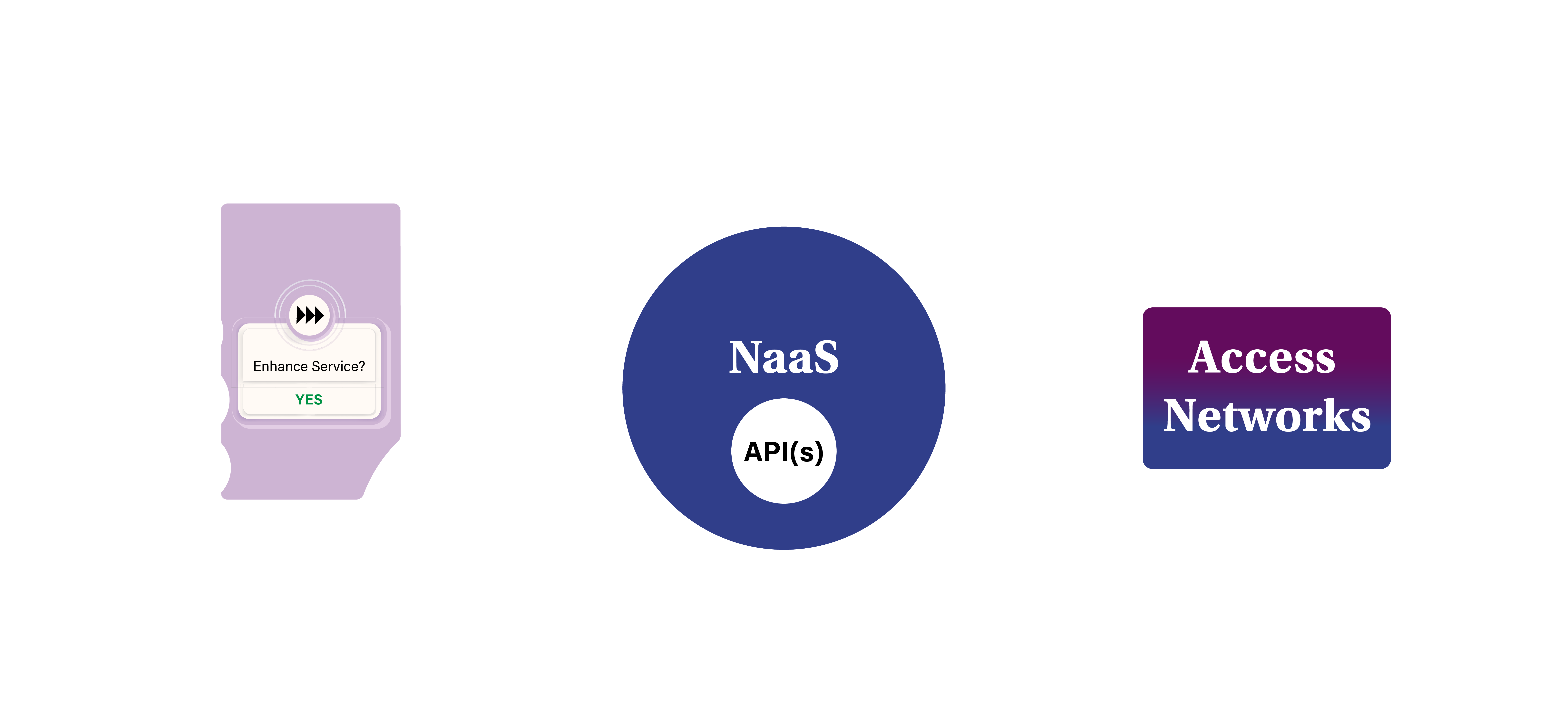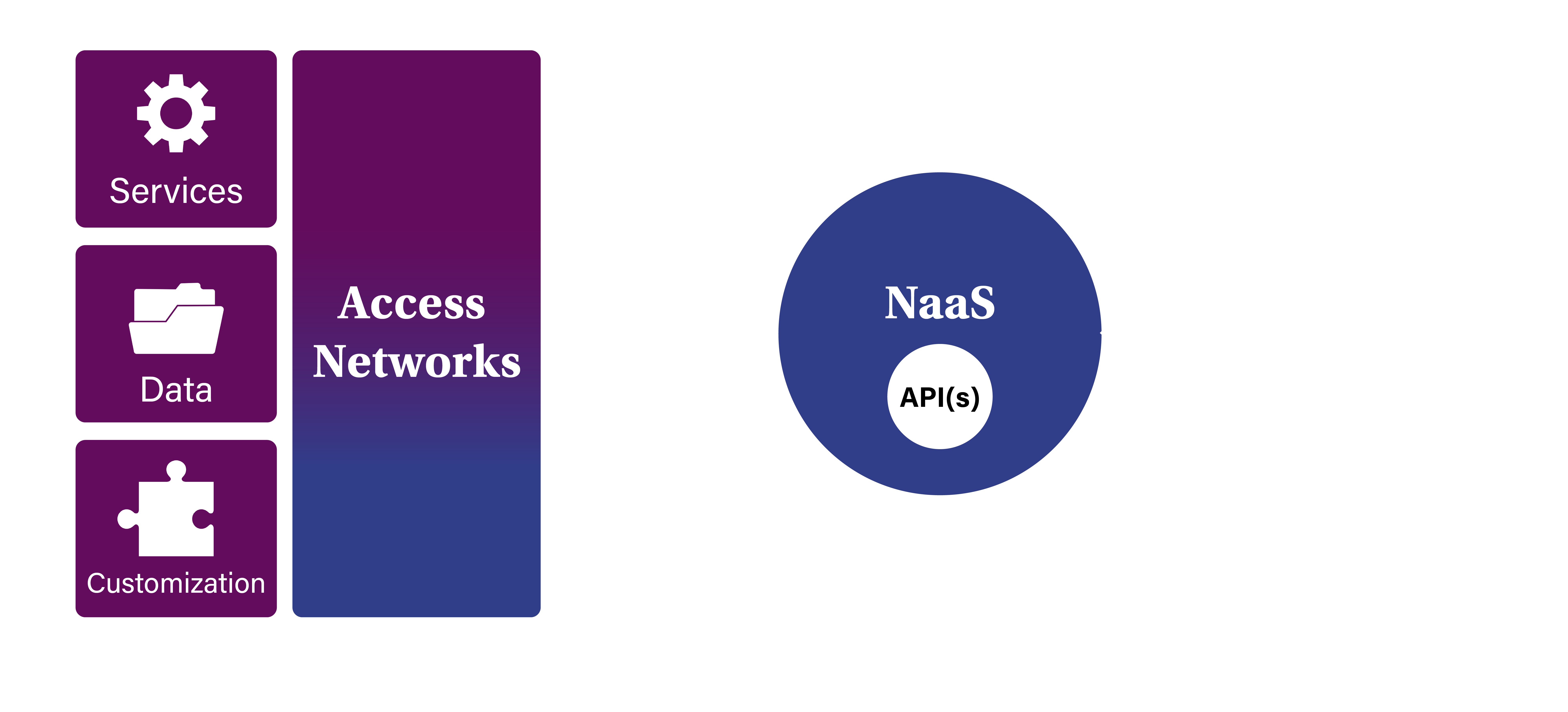Convergence
NaaS: Network as a Service
A solution for connecting applications to network services, NaaS enables new and seamless experiences through a common set of industry-scale application programming interfaces (APIs), creating consistency across operators and ease of use for the developer community.
-
APIs Made Simple
By eliminating the complexity and domain knowledge of the underlying access network technologies — DOCSIS®, mobile and passive optical networking (PON), for example — programmers can write their applications to a single, simplified API.
High-level, intent-based APIs allow developers to request network services and data in a scalable and streamlined fashion. These APIs are designed so that programmers do not need to know the specifics of access networks. This simplified approach ensures efficient development of applications that can seamlessly run across all networks.
Proofs of Concept
-
Speed Boost (Dynamic Quality of Service, or QoS)
-
Management of Customer Premises Equipment (CPE)
-
Work From Home Services
In this scenario, an operator activates a speed boost for a user’s mobile or fixed connection based on a particular service offering. The proof of concept (POC) demonstrates how a single QoD, intent-based API can be used to activate QoS settings, such as an increase in throughput, regardless of the underlying access network technology (e.g., DOCSIS, mobile or PON).

This scenario demonstrates how a user can control and customize home network traffic based on his or her needs, applications and device requirements. The use case leverages a home network to illustrate different users’ expectations and needs for video communications, cloud gaming and virtual reality (VR) applications. Using a self-service application, users are able to gain more control over their devices and how the traffic flows across those devices to meet their needs.

In this scenario, a user working from home can connect an employer-owned device to his or her home network. Because the device belongs to a Corporate Work-From-Home (WFH) service, it is automatically authenticated, authorized and connected to a dedicated network using a secure tunnel back to the employer’s network. This POC demonstrates how NaaS enables a network to automatically recognize a device, grant it special access and create a corporate service set identifier (SSID). This enables a connection that is secure and capable of broadband speeds that match the corporate service level.






